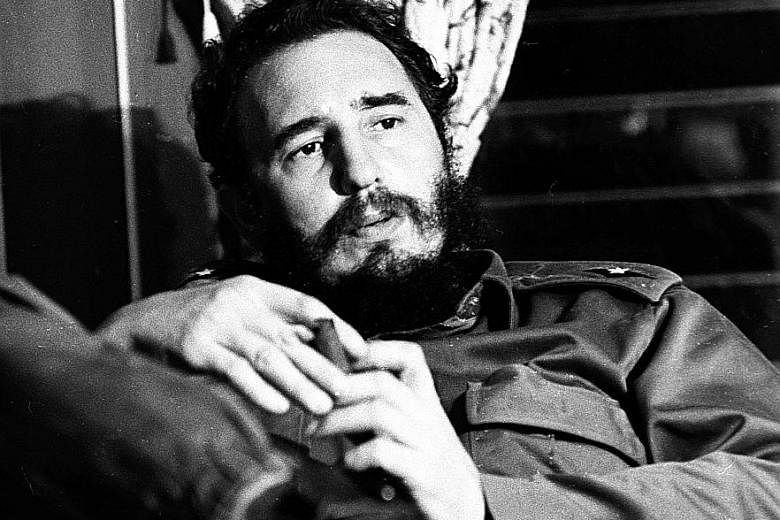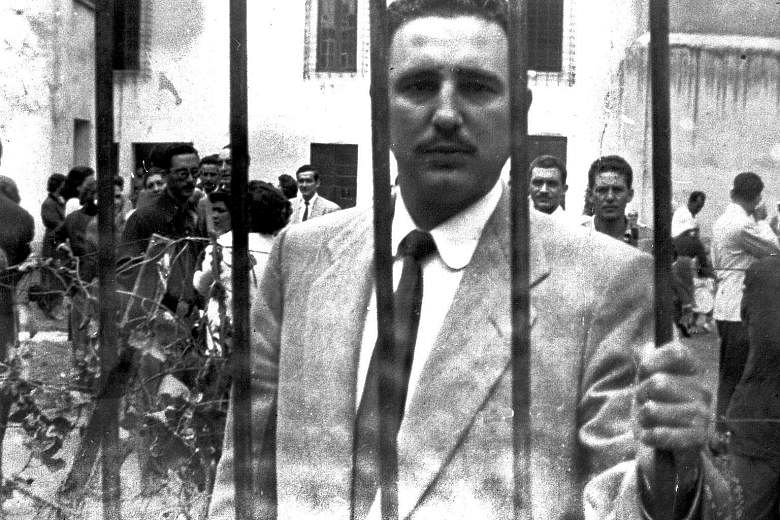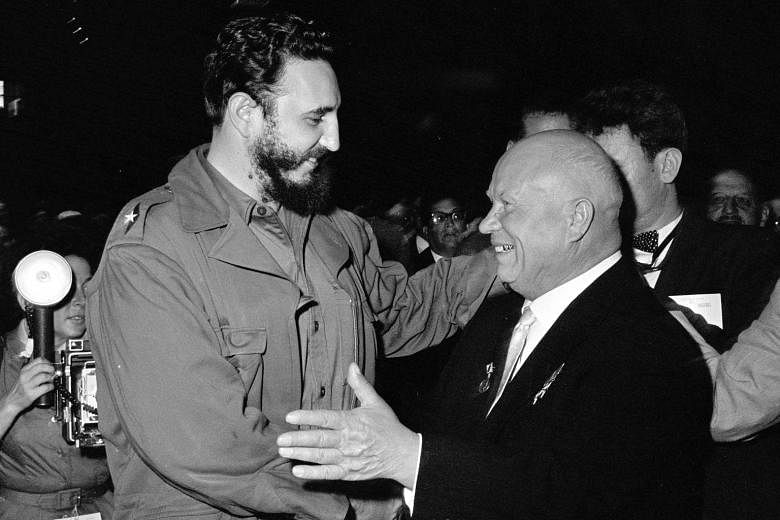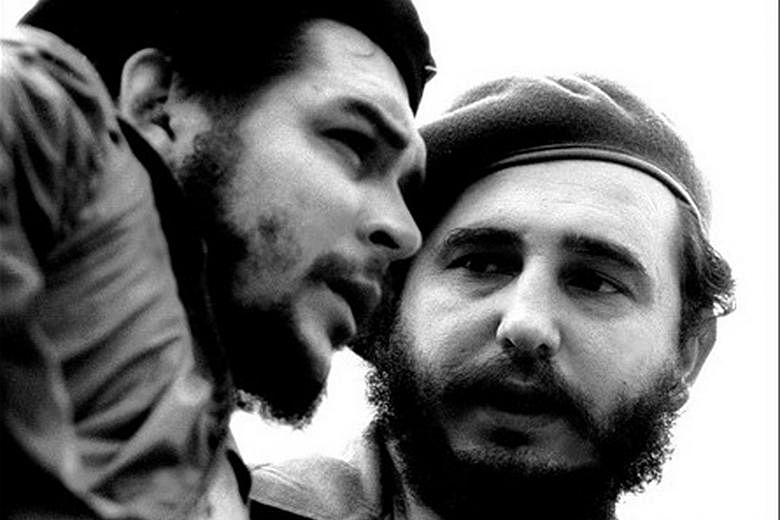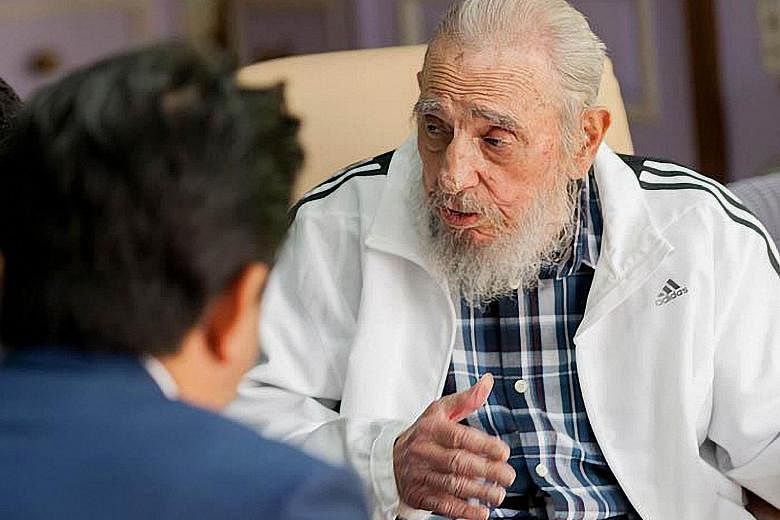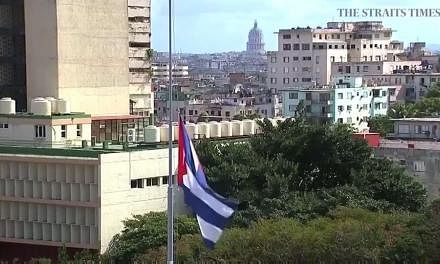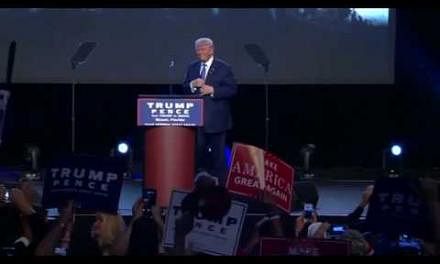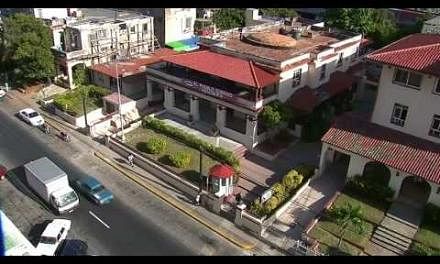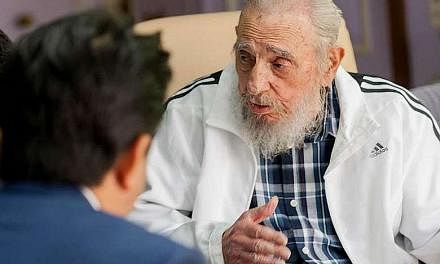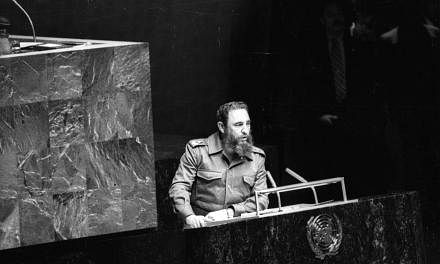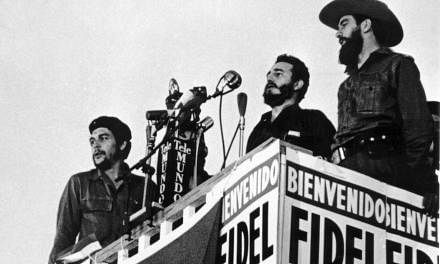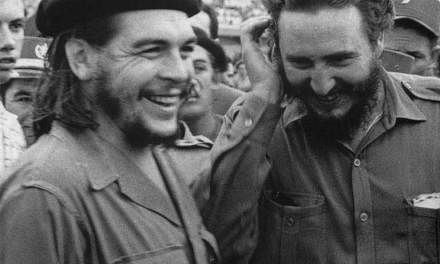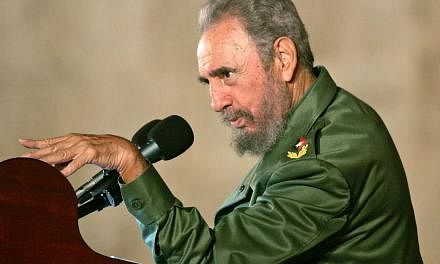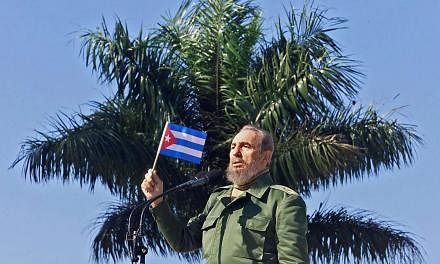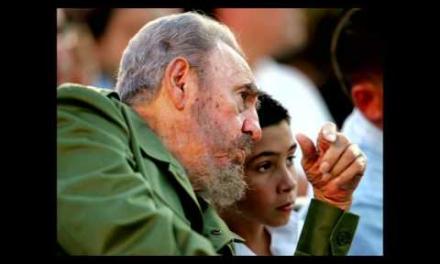HAVANA • Fidel Castro, the Cuban revolutionary leader who built a communist state on the doorstep of the United States and for five decades defied US efforts to topple him, has died, his younger brother Raul announced to the nation on Friday. He was 90.
Cuba declared nine days of public mourning yesterday and said his ashes will be buried at a ceremony on Dec 4 in Santiago de Cuba.
A towering figure of the second half of the 20th century, Fidel stayed true to his ideology beyond the collapse of Soviet communism, and retained an aura in parts of the world that had struggled against colonial rule and exploitation.
He had been in poor health since an intestinal ailment nearly killed him in 2006. He formally ceded power to his younger brother two years later.
Wearing a green military uniform, Mr Raul Castro appeared on state television on Friday to announce his brother's death. "Ever onward, to victory," he said, using the slogan of the Cuban revolution.
Tributes poured in from leaders, including Russian President Vladimir Putin, Indian Prime Minister Narendra Modi and Venezuela's socialist President Nicolas Maduro, who said "revolutionaries of the world must follow his legacy".
The streets were quiet in Havana, but some residents reacted with sadness to the news, while in Miami, where many exiles from the Communist government live, a large crowd waving Cuban flags cheered, danced and banged on pots and pans.
Fidel had held onto power longer than any other living national leader except Queen Elizabeth II. He became a towering international figure whose importance in the 20th century far exceeded what might have been expected from the head of state of a Caribbean island nation of 11 million people.
He dominated his country with strength and symbolism from the moment he triumphantly entered Havana on Jan 8, 1959, and completed his overthrow of Mr Fulgencio Batista by delivering his first major speech in the capital before tens of thousands of admirers at the vanquished dictator's military headquarters.
A spotlight shone on him as he swaggered and spoke with passion until dawn. Finally, white doves were released to signal Cuba's new peace. When one landed on his shoulder, the crowd erupted, chanting: "Fidel! Fidel!"
His government improved the living conditions of the very poor, achieved health and literacy levels on a par with rich countries and rid Cuba of a powerful Mafia presence.
But he also tolerated little dissent, jailed opponents, seized private businesses and monopolised the media.
A Jesuit-educated lawyer, Fidel wielded power like a tyrant, controlling every aspect of the island's existence. He was Cuba's "Maximo Lider". From atop a Cuban army tank, he directed his country's defence at the Bay of Pigs invasion that led to a humiliating defeat for the US force.
Fidel's legacy in Cuba and elsewhere has been a mixed record of social progress and abject poverty, of racial equality and political persecution, of medical advances and a degree of misery comparable to the conditions that existed in Cuba when he seized Havana.
But beyond anything else, it was Fidel's obsession with the US, and America's obsession with him, that shaped his rule.
After he embraced Communism, Washington portrayed him as a devil and a tyrant and repeatedly tried to remove him from power, from an economic embargo that has lasted decades, assassination plots and even bizarre plans to undercut his prestige by making his beard fall out.
Fidel's defiance of US power made him a beacon of resistance in Latin America and elsewhere, and his bushy beard, long Cuban cigar and green fatigues became universal symbols of rebellion.
Early in his rule, at the height of the Cold War, Fidel allied Cuba to the Soviet Union, which protected the island and was its principal benefactor for three decades.
His willingness to allow the Soviets to build missile-launching sites in Cuba led to a harrowing diplomatic stand-off between the US and the Soviet Union in the fall of 1962, one that could have escalated into a nuclear exchange. The world remained tense until the confrontation was defused 13 days after it began, and the launchpads were dismantled.
The death of the man known to most Cubans as "El Comandante" - the commander - or simply "Fidel" leaves a huge void in the country he dominated for so long. It also underlines the generational change in Cuba's communist leadership. Mr Raul Castro vows to step down when his term ends in 2018 and the Communist Party has elevated younger leaders to its Politburo, including 56-year-old Miguel Diaz-Canel, who is first vice-president and the heir apparent.
While Fidel's death might further ease the antagonism between Cuba and the US, there was uncertainty whether US President-elect Donald Trump would continue to normalise relations, or revive tensions and fulfil a campaign promise to close the US embassy in Havana once again. Fidel, suspicious of rapprochement under US President Barack Obama, remained defiant to the end.
In April, in a rare public appearance at the Communist Party conference, Fidel shocked party apparatchiks by referring to his own imminent mortality. "Soon, I will be like all the rest. Our turn comes to all of us, but the ideas of the Cuban communists will remain," he said.
NYTIMES, REUTERS, AGENCE FRANCE-PRESSE
Fidel Castro: Birth to death
Aug 13, 1926: Fidel Castro is born in Biran, eastern Cuba, the third of seven children, son of a Spanish immigrant landowner and a Cuban mother.
July 26, 1953: Leads a failed attack on Santiago de Cuba's Moncada military barracks. Castro is arrested and dozens of his men are jailed.
Dec 2, 1956: After setting off from Mexico, lands in south-eastern Cuba on the ship Granma with 81 fighters and launches a 25-month-long military campaign in the Sierra Maestra mountains.
Jan 1, 1959: Dictator Fulgencio Batista flees the country. Castro makes a victorious entry into Havana on Jan 8, and is appointed Prime Minister in February.
April 15-27, 1959: Goes to the United States, where he meets Vice-President Richard Nixon.
1960: Establishes diplomatic relations with the Soviet Union.
1961: The US severs diplomatic relations with Cuba.
April 17-19, 1961: Defeats 1,400 anti-Castro fighters in the US-backed Bay of Pigs invasion.
Feb 13, 1962: US President John F. Kennedy decrees an embargo against Cuba.
Oct 1962: The Soviet Union deploys missiles in Cuba but eventually agrees to withdraw them in exchange for guarantees that the US would not invade Cuba.
April 1963: Castro makes his first visit to the Soviet Union.
1965: Castro founds the Communist Party of Cuba.
1975: Sends troops to help Angola independence fighters.
1980: Gives green light to refugee exodus of 125,000 on the so-called Mariel boatlift to the US.
1990: Cuba plunges into extreme economic difficulties following the collapse of the Soviet Union.

1995: Castro visits China for the first time (above).

1998: Welcomes Pope John Paul II (above) on his historic visit to Cuba.

1999: Launches a successful campaign for the return of six-year-old Cuban shipwreck survivor Elian Gonzalez (above) from Florida.
July 31, 2006: Temporarily transfers power to his brother, defence chief Raul Castro, then 75, after what an official statement calls delicate intestinal surgery.
Late November-Dec 3, 2006: Fails to appear during celebrations for his 80th birthday.
Feb 2008: Raul Castro is named President.
March 22, 2011: Fidel Castro confirms he no longer holds any official title.
Dec 17, 2014: Fidel Castro remains out of sight as Raul Castro and US President Barack Obama announce the normalisation of relations.
July 20, 2015: US and Cuba reopen embassies in each other's capitals.
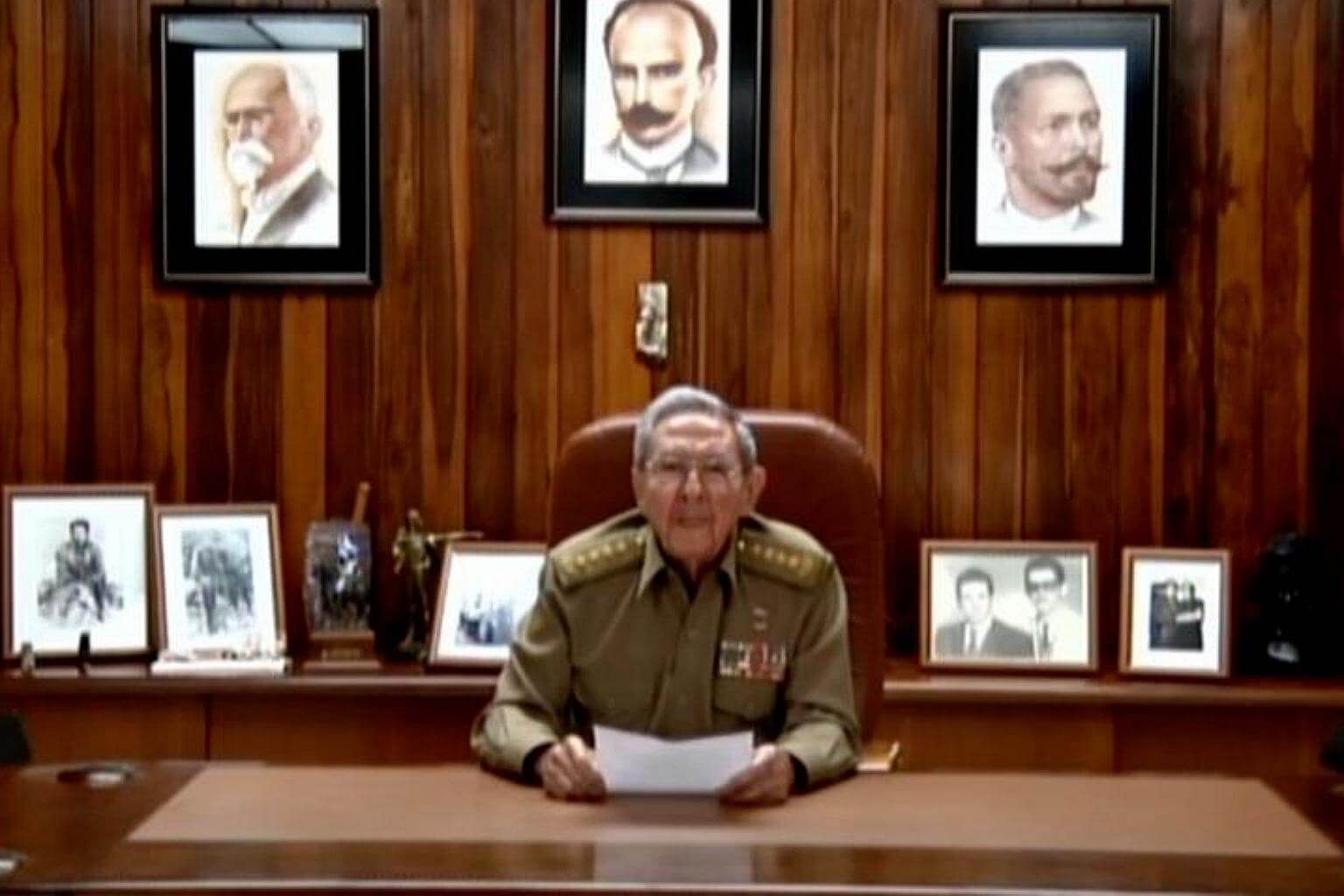
Nov 25, 2016: Fidel Castro dies aged 90, Raul Castro (above) announces.
